Summary of the 2017 Aquaculture Innovation Workshop
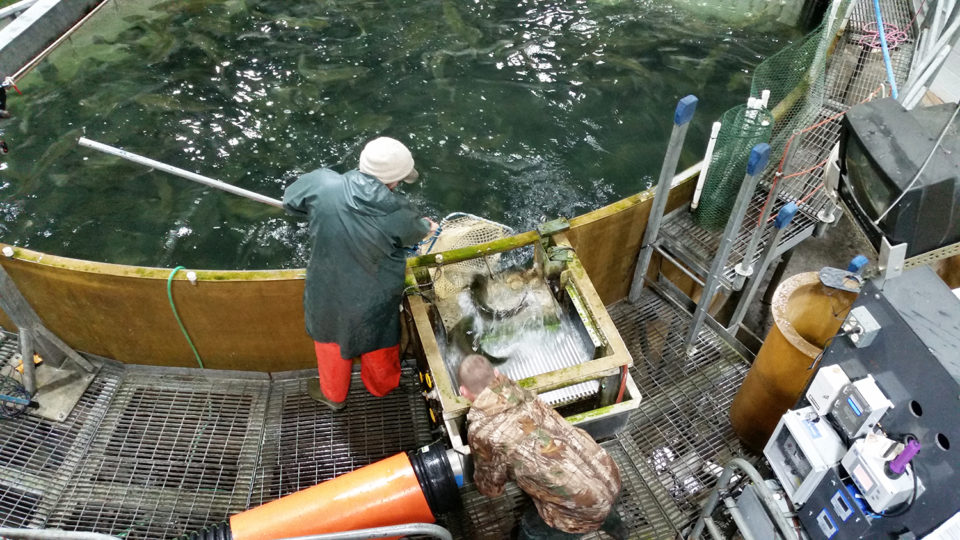
The last five years have created an almost perfect storm of circumstances that has encouraged industry improvements and interest in closed containment systems. In response to the strong and growing demand for Atlantic salmon, the industry is investing in new terrestrial infrastructure to produce larger post-smolts to plant in oceanic pens, and entrepreneurs are investing in commercial-sized salmon and trout production in recirculation aquaculture systems (RAS) located near the main markets of North America, Europe and Asia.
At The Conservation Fund Freshwater Institute (TCFFI), we believe that finding better methods for producing seafood is an environmental and economic problem. Sustainable food systems, including seafood, must be more local to nurture people while conserving natural resources and creating jobs within these communities.
And that is why we have focused on the development of sustainable aquaculture production technologies for three decades. With the support of the Agricultural Research Service of the US Department of Agriculture. UU., The Norwegian Research Council (CtrlAQUA), industry, non-profit foundations and other groups, we work to address many of the biggest technological challenges facing national aquaculture producers. This includes working to reduce capital costs, improve energy efficiency, reduce water needs, increase the capture and reuse of nutrients and improve the performance, health, welfare and quality of salmonids when they occur in terrestrial systems. .
The Aquaculture Innovation Workshop 2017
To deepen the investment, marketing, technical and biological challenges and opportunities of the closed containment system in the production of salmonids, TCFFI – in partnership with Tides Canada, Atlantic Salmon Federation and Simon Fraser University – organized the Aquaculture Innovation Workshop 2017 ( Aquaculture Innovation Workshop, AIW) in Vancouver, British Columbia, from November 29 to 30.
The great interest in this timely and relevant “International Summit on Fish Farming in Closed Containment Systems,” our ninth meeting since 2011, brought together almost 185 participants and focused on the floating and terrestrial systems. The AIW provided an opportunity for aquaculture producers, suppliers to the aquaculture industry, investors and financial institutions, consultants, scientists and regulators to communicate progress in the technical, biological and economic viability of fish farming, particularly salmon and trout, in aquaculture systems. closed containment.
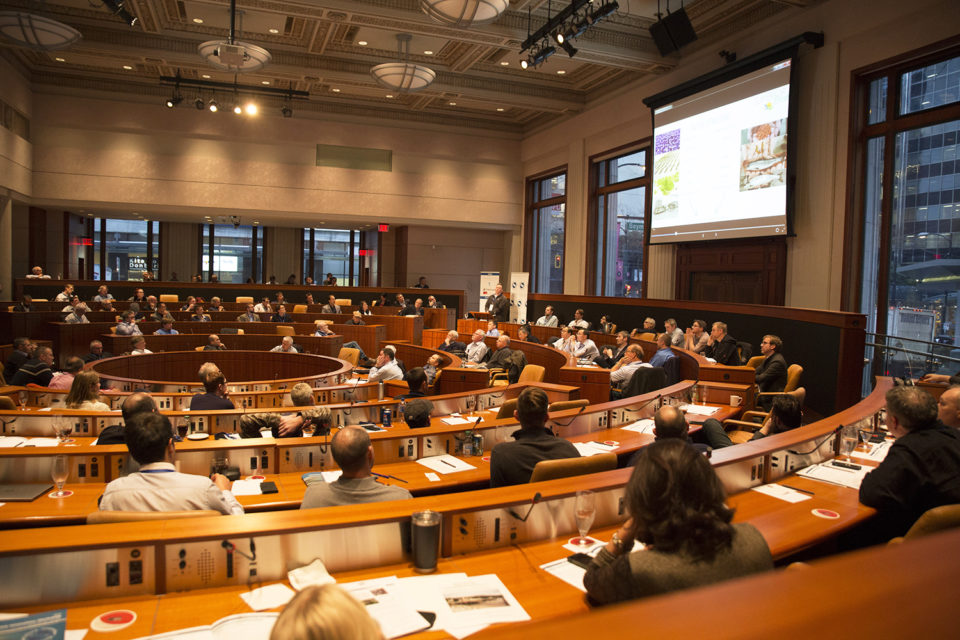
The participants came from almost a dozen countries, with an important representation of Canada, the United States and Norway. Although there have been many important contributions from other countries, which literally encompass the world, these three countries stood out:
- The United States is a large market for Atlantic salmon, but more than 90 percent of these fish are imported. According to the data reported by the National Marine Fisheries Service, Americans consume almost 500,000 metric tons (MT) annually, but produce only about 20,000 MT per year. For the United States, many think that it is more important than ever to find ways to increase the production of farmed salmon internally. This is a problem of sustainability, economic and food security. Investors and entrepreneurs, producers, suppliers, consultants and researchers are supporting the development and application of closed containment technologies.
- Canada is the second largest supplier in the EE market. UU and Canadian producers have already adopted closed containment systems based on land and floating. As in the United States, many stakeholders support the development and application of closed containment technologies.
- Norway is the world leader in Atlantic salmon production, with almost 1.3 million MT of annual production. Norway focuses on increasing salmon production sustainably, potentially multiplying it by five by 2050. They recognize that achieving this goal will require a combination of different approaches, including the expansion of production on land and in the sea. . At the Norwegian Center of Excellence, the CtrlAQUA SFI project started in 2015 with a mission statement of seven years to optimize the production of post-smolts in closed systems, so that the production of oceanic cages is more sustainable and efficient. The AIW participants were fortunate to have almost a dozen Norwegian scientists and industry partners present at the innovations of CtrlAQUA to date. Further,
About 35 experts in closed containment systems were presented. Most of these presentations are available on the AIW website as a PDF of the PowerPoint presentation and / or as a video of the presentation, depending on whether the author granted permission. A summary of the highlights below.
The opening keynote speaker (Mark Retzloff, Alfalfa’s Market, USA) and a closing keynote speaker (Fred Haberman, Urban Organics , USA) described some of their real experiences that are required to build an industry in the sectors of natural and organic foods.
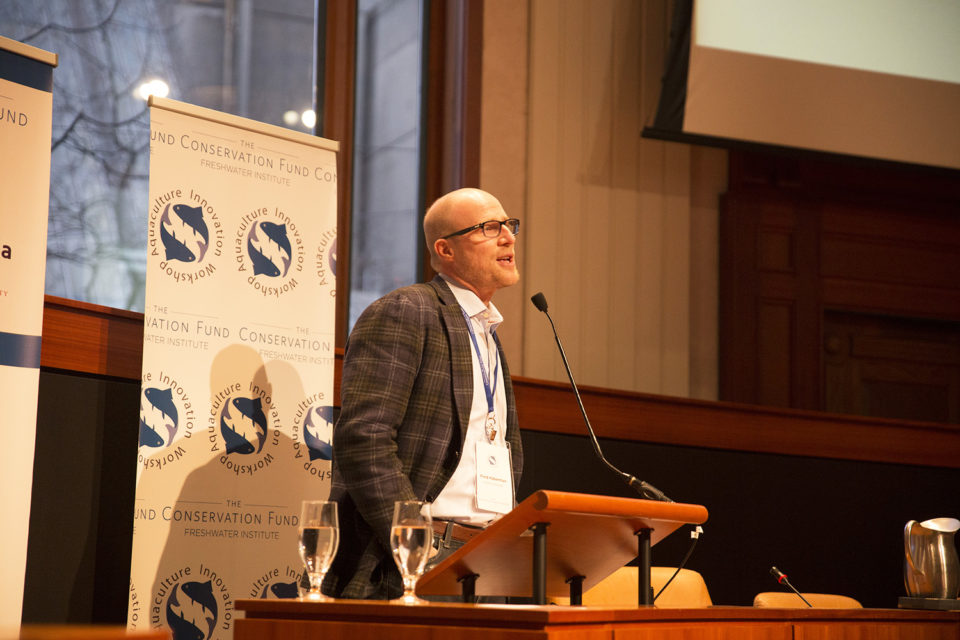
Opportunities and challenges: salmon production on land
After the opening keynote speaker, the first day of the AIW began with three speakers who discussed the many opportunities and challenges involved in investing in salmon production in terrestrial containment systems: Tone Bjørnstad Hanstad (DNB Markets, Norway), Jon Fitzgerald (Stope Capital Advisors, Canada) and Gary Robinson (GRV Consulting, Canada). Next, Johan Andreassen (Atlantic Sapphire, USA) joined these speakers in a discussion panel on investment and economics of land-raised salmon.
- Tone Bjørnstad Hanstad noted that, in the last three years, the salmon industry has invested heavily in RAS to increase freshwater capacity for smolts and post-smolts. Internal development is driven by the traditional recognition of salmon producers of the importance of technology for biological control, since RAS is a growth driver. He also noted that there were more than 20 projects under development around the world with plans to produce approximately 150,000 MT fully terrestrial after 2020. In short, the economy is changing; the estimated costs of producing salmon in RAS versus open pens are convergent, particularly due to the significantly increased costs in oceanic pens and the larger scale of certain onshore salmon production projects located in markets with a transport cost advantage. In addition, capital expenditures for large RAS are increasingly competitive to those needed for traditional production in Norway. With the new regulations (traffic light system), approximately 100 NOK of investment in licenses per kilogram of production are required, in addition to NOK 15 per kg of investment in equipment.
- Jon Fitzgerald argued that the balance between risk and reward has shifted to the point where professional investors should consider investing in salmon farms grown on land. He noted that impact investors were an ideal potential capital partner because the inherent operational risk of all aquaculture is offset, in part, by the more favorable social and environmental profile of terrestrial systems. Fitzgerald also noted that, to attract venture capital, projects must include trained and experienced RAS operators, validated system design and support market conditions. Jon said that “excellence in operations is as ingrained in staff as it is in technology.” The industry faces a shortage of SAN operators due to the rapid expansion of terrestrial systems around the world. This challenge was highlighted by many of the producers who spoke later in the AIW.
- Gary Robinson highlighted the potential economy of a 3,000 MT per year land-based salmon farm, but noted that he felt this was the “initial level of production,” as he suggested that the economy on small farms would be more challenging. It looks very promising “at scale,” but there are many ways to do it wrong, making sure that the right team is in place (as well as funding) is the key to success.
- Johan Andreassen of Atlantic Sapphire (a Norwegian with projects in the US and Denmark) noted that his experience in selling Atlantic Sapphire salmon farmed on land suggests that there really is a large market for premium products. There is much more information from Atlantic Sapphire in later presentations.
Updates on the production on land and floating of salmonids
Ten speakers from the salmon industry provided updates on their closed floating and terrestrial containment systems used for the production of post-smolt or edible fish.
- Trond W. Rosten, who works in Norway as a manager of the research and development group at Marine Harvest, described his new approaches to closed containment. Marine Harvest is using a combination of large terrestrial RAS facilities and is testing semi-enclosed floating containment systems for the production of smolts and post-smolts. He pointed out that Marine Harvest is probably the largest salmon producer in the world. He also explained how the production of a larger post-smolt fish (potentially even a 1 kilogram fish) would reduce the time required to breed these fishin corrals of oceanic networks to only half of the life of the salmon. In the last 12 years, Rosten states that Marine Harvest has significantly reduced the time of production in cages of oceanic networks. He thought that post-smolt production would continue until potentially less than half of the life of the farmed Atlantic salmon was in the sea. He also pointed out that the improvement and development of the technology of the network cages is important for the company. Marine Harvest is an industrial partner of CtrlAQUA.

- Frode Mathisen, director of freshwater production at Grieg Seafood, discussed the commercial proposal for the production of post-smolts on land. He noted that in recent years, RAS facilities are being built to provide smolt and post-smolt production; The new construction with RAS has largely replaced the construction of continuous flow systems. Frode thought that an extended goal would be to reduce the time of two years at sea to just one year, possibly by planting post-smolts of 0.5 to 1 kg that (compared to a smolt of 100 grams) are potentially more robust in the sea , and what would drastically shorten the growth cycle at sea, which would reduce the risk and allow for longer fallow periods. Grieg Seafood is an industrial partner of CtrlAQUA.
- Sean Wilton of AgriMarine Holdings (British Columbia) described steelhead trout production in commercial size in large floating fiberglass tanks at Louis Lake in British Columbia. These tanks are operated in a single step with lake water pumped from a selected depth to optimize the culture temperature.
- Garry Ullstrom and Eric Hobson described the progress made with the production of Atlantic salmon in Kuterra (British Columbia). They described how optimized operations improved the taste and growth of salmon, reduced costs and increased incomes by reducing sales reductions due to sexual maturation; the reductions were less than 2.5 percent with the most recently collected cohort. Kuterra is one of the first companies to produce commercial-sized Atlantic salmon in RAS, with its first harvest in April 2014.
- Kirk Havercroft updated us on the expansions in the RAS in Sustainable Blue (Nova Scotia). Its most recent expansion, now complete, must double production to approximately 200 MT / year. He said that additional capacity is currently being built to bring the total production to 500 MT / year. This new expansion is based on a modular technology platform that allows biological isolation between individual fish tanks. The construction must be completed in August 2018. They started harvesting Atlantic salmon at the end of 2015.
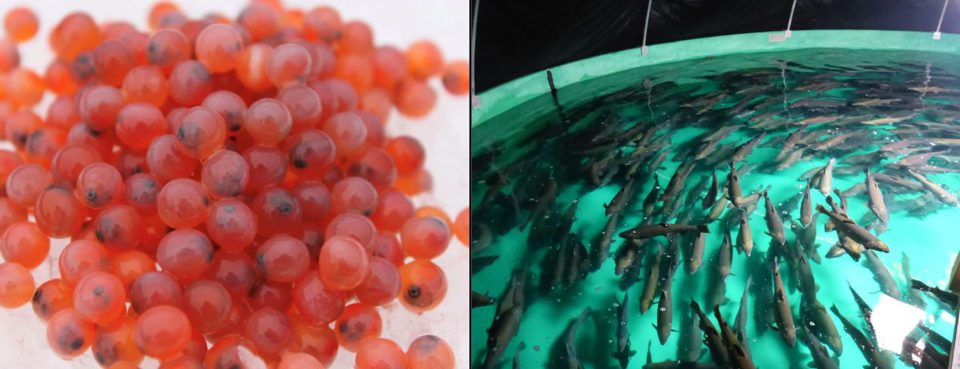
- Justin Henry described the work of Northern Divine (British Columbia) to supply all-female coho salmon eggs and caviar and sturgeon fillets using a combination of continuous flow and RAS production. He spoke about the search for value in all parts of the fish and whether organic certification can provide value to his farm. Justin stressed the importance of cultivating sex that is most valuable to any species of fish. He also reminded producers of the importance of making sure that their fish produced with RAS are properly finished with an absolutely clean taste when they reach the market.
- Terry Brooks at Golden Eagle Aquaculture (British Columbia) described his production (about 125 MT / year) of coho salmon. He explained that they use RAS to produce a coho salmon of 4.5 lbs. in about 16 months.
- Samuel Chen spoke about steelhead production at Hudson Valley Fish Farm (New York); Your fish has just entered the market. He said they are producing fish from 6 to 7 lbs. in a production cycle of 18 months. They are very happy with their harvest system that electro-stuns the fish after having gone through the finishing process before the harvest, and that they have had some positive responses with local marketing. He also emphasized how much effort they have made to identify the best people for their team and the need to develop a comprehensive staff training plan.

- Brandon Gottsacker presented an update on Superior Fresh LLC (Wisconsin), which is the first commercial salmon farm in the Atlantic based on land in the US. UU And one of the largest aquaponics production systems in the world. They are already harvesting several varieties of lettuce and expect to produce approximately 1,000 MT of salad lettuce annually in their aquaponics system on rafts in a nearly 3-acre glass house. They expect to produce about 70 MT of fish and currently have multiple cohorts of Atlantic salmon and rainbow trout under cultivation in their fish facility. They hope to harvest the first market-sized trout (1.7 lbs.) In the spring, with the harvest of their first Atlantic salmon market size (8-10 lbs.) In the summer. They water the effluent from their fish culture,

- Johan Andreassen provided an update on Atlantic Sapphire’s “blue house”, that is, its land-based Atlantic salmon farms in Denmark and the USA. UU His first harvest began at the end of 2013 in Langsand Laks (Denmark). They harvested salmon until the autumn of 2014, when they depopulated and sterilized the farm to eliminate a bacterial pathogen that probably entered the farm through the entrance of seawater. After sterilizing the RAS and installing a “firewall” to disinfect the seawater inlet, they replenished with post-smolt Atlantic salmon in 2015 and re-entered the market with fish in early 2016. Johan said that this first RAS installation It has a production capacity of approximately 800 MT / year. He also discussed his current construction in an expansion to take Langsand Laks to approximately 3,000 MT / year. These salmon are traded in the United States through Platina Seafood, a subsidiary of Atlantic Sapphire. Andreassen also described the plans for his new farm near Miami, which has already started at a RAS facility designed to produce about 8,000 MT / year in this first phase of US production, with the first cohort of eggs with eyes scheduled to arrive by the end of 2018. The design of the farm near Miami, Florida is quite unique, as it will depend on brackish water flowing artesian from a depth of more than 1,000 ft. Andreassen said the farm will also depend on re-injecting up to 20 million gallons per day through a 64-inch-diameter injection into the “rock zone,” which is at depths of more than 3,000 feet. This is the same area where the state injects municipal wastewater, because the area contains a very porous limestone. Atlantic Sapphire plans subsequent expansions to 90,000 MT of annual production. Johan estimates that the US market UU It will grow 8 percent annually and will reach close to 1 million MT of annual consumption within 10 years. Atlantic Sapphire plans subsequent expansions to 90,000 MT of annual production. Johan estimates that the US market UU It will grow 8 percent annually and will reach close to 1 million MT of annual consumption within 10 years. Atlantic Sapphire plans subsequent expansions to 90,000 MT of annual production. Johan estimates that the US market UU It will grow 8 percent annually and will reach close to 1 million MT of annual consumption within 10 years.
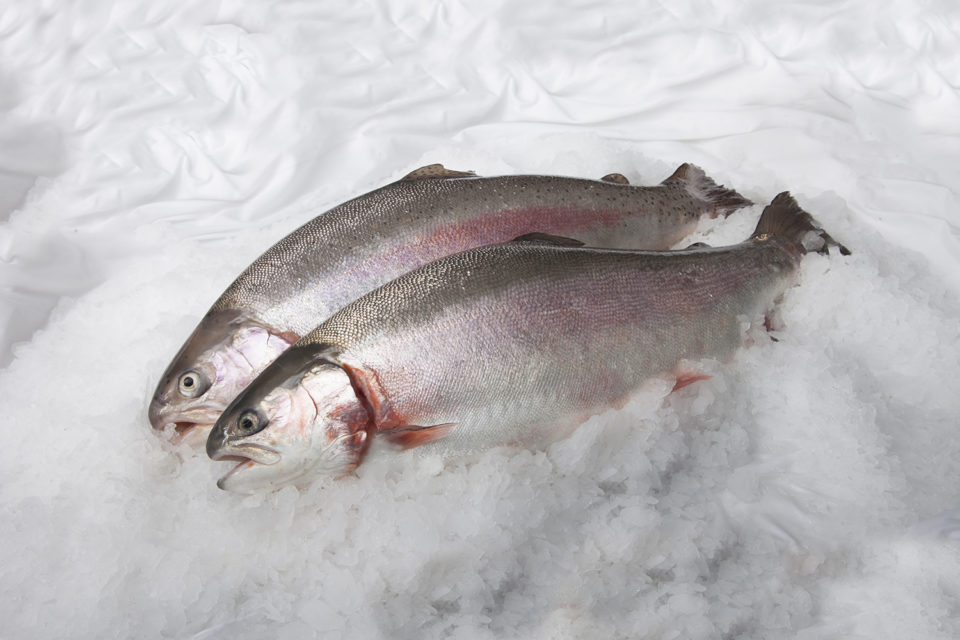
Marketing of sustainable seafood
The first day of the AIW concluded with three speakers who focused on highlighting convincing market messages for sustainable seafood, particularly when marketing farmed salmon: Guy Dean, Albion Farm and Fish (British Columbia); Jen Paragallo, Fishpeople Seafood (Oregon); and Damien Claire, Atlantic Sapphire (Florida).
- Guy Dean, Albion Farms and Fisheries (AFF), explained how they had been processing and marketing the Kuterra salmon for the last four years in order to distinguish this salmon from all others and, at the same time, obtain a plus (premium) for this unique product. By developing an extensive marketing and brand development program with clear brand attributes, AFF achieved these objectives but not without challenges. In his presentation, Guy Dean highlighted key learnings – good, bad and ugly – the original AFF launch strategy and how it evolved to stay true to the brand while at the same time facing the biological challenges of this new technology.
- Jen Paragallo from Fishpeople Seafood highlighted several key issues in seafood marketing. She emphasized how old-school marketing was driven by supply: we have a lot of this fish, so let’s sell in the best possible way. Currently, the marketing of seafood follows the path of traditional packaged products and begins with the consumer in the first place. Who are we going to, what do they want and how can we offer them a memorable and differentiated experience, so that they return to our brand again and again? Paragallo also pointed out that transparency is the way forward. Consumers demand it and the seafood industry has the opportunity to move from its traditional “black box” approach to sourcing, which has led to consumer distrust and confusion, to implacable transparency. Consumers today are increasingly interested in the history behind their food, and most seafood companies have a great story to tell about their farmer or fisherman producers … it’s a missed opportunity not telling that story Jen also pointed out that consumers fear seafood for many reasons: they are difficult to cook and expensive to spoil, and supply and sustainability are vague and misunderstood. There is a great opportunity for all brands to gain by educating consumers in an honest and accessible way using the media they consume most easily, that is, social networks. Consumers today are increasingly interested in the history behind their food, and most seafood companies have a great story to tell about their farmer or fisherman producers … it’s a missed opportunity not telling that story Jen also pointed out that consumers fear seafood for many reasons: they are difficult to cook and expensive to spoil, and supply and sustainability are vague and misunderstood. There is a great opportunity for all brands to gain by educating consumers in an honest and accessible way using the media they consume most easily, that is, social networks. Consumers today are increasingly interested in the history behind their food, and most seafood companies have a great story to tell about their farmer or fisherman producers … it’s a missed opportunity not telling that story Jen also pointed out that consumers fear seafood for many reasons: they are difficult to cook and expensive to spoil, and supply and sustainability are vague and misunderstood. There is a great opportunity for all brands to gain by educating consumers in an honest and accessible way using the media they consume most easily, that is, social networks. and most seafood companies have a great story to tell about their farm or fisherman producers … it’s a missed opportunity not to tell that story. Jen also pointed out that consumers fear seafood for many reasons: they are difficult to cook and expensive to spoil, and supply and sustainability are vague and misunderstood. There is a great opportunity for all brands to gain by educating consumers in an honest and accessible way using the media they consume most easily, that is, social networks. and most seafood companies have a great story to tell about their farm or fisherman producers … it’s a missed opportunity not to tell that story. Jen also pointed out that consumers fear seafood for many reasons: they are difficult to cook and expensive to spoil, and supply and sustainability are vague and misunderstood. There is a great opportunity for all brands to gain by educating consumers in an honest and accessible way using the media they consume most easily, that is, social networks. and supply and sustainability are vague and misunderstood. There is a great opportunity for all brands to gain by educating consumers in an honest and accessible way using the media they consume most easily, that is, social networks. and supply and sustainability are vague and misunderstood. There is a great opportunity for all brands to gain by educating consumers in an honest and accessible way using the media they consume most easily, that is, social networks.
- Damien Claire, head of sales and distribution, provided an update on Atlantic Sapphire consumer market messages. In a market where the consumer faces many options, the industry generally continues to supply more seafood. Atlantic Sapphire offers a unique product with a strong brand promise, although it currently has little consumer awareness. The attributes of the Atlantic Sapphire product include a delicious flavor (soft, delicate and versatile for cooking), sustainability (reduced carbon footprint logistics), compatibility with the environment (reduced impact on the marine environment), all-natural (no antibiotics) , hormones, pesticides and PCBs) and produced locally (Fresco from Florida, USA). ) Atlantic Sapphire has already been recognized by Oceanwise ™ and Seafood Watch as “best option.” Target market opportunities include restaurants and retailers of high quality and also oriented towards sustainability, along with non-traditional channels such as online retailers and the armed forces of the USA. UU Atlantic Sapphire will participate leading the industry towards a more sustainable future, increase knowledge of the company’s consumer brand, drive innovation in new products and packaging, and boost the per capita consumption of the US. UU Atlantic Sapphire will participate leading the industry towards a more sustainable future, increase knowledge of the company’s consumer brand, drive innovation in new products and packaging, and boost the per capita consumption of the US. UU Atlantic Sapphire will participate leading the industry towards a more sustainable future, increase knowledge of the company’s consumer brand, drive innovation in new products and packaging, and boost the per capita consumption of the US. UU
Author
-
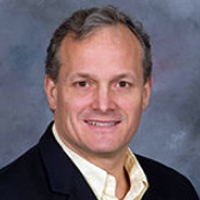
Steven Summerfelt, Ph.D.
The Conservation Fund Freshwater Institute
1098 Turner Road
Shepherdstown, WV 25443 USA
[32,103,114,111,46,100,110,117,102,110,111,105,116,97,118,114,101,115,110,111,99,64,116,108,101,102,114,101,109,109,117,115,115]
Tagged With
Related Posts
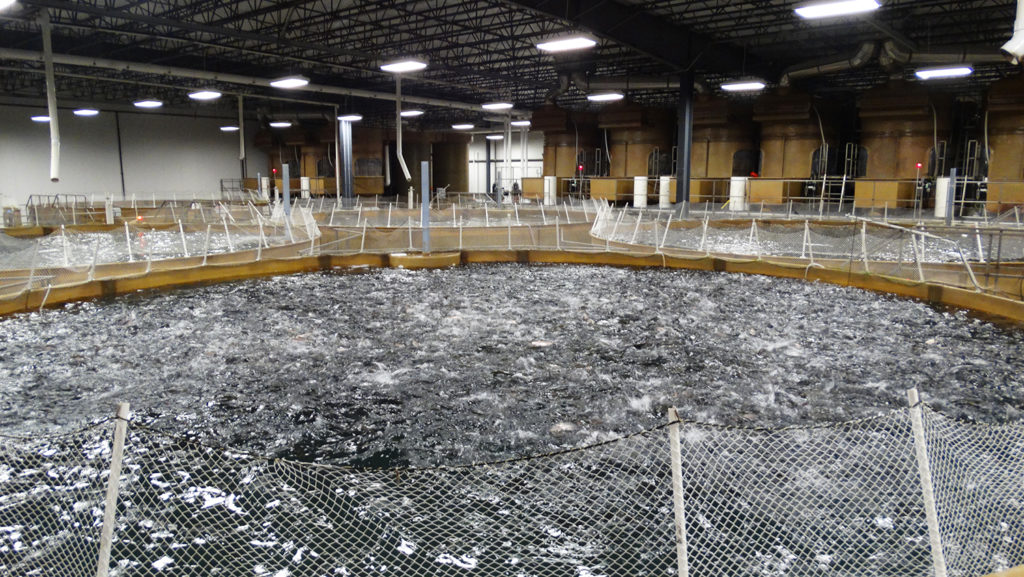
Intelligence
AquaBounty, con nueva instalación RAS, espera ganar apoyo público para el salmón GM
Ron Stotish, CEO de AquaBounty Technologies, cree que el salmón genéticamente modificado no es una amenaza para sus oponentes y que la perspectiva de AquAdvantage es buena. Con la compra de la instalación RAS de Bell Fish Co., la comercialización comenzará pronto.
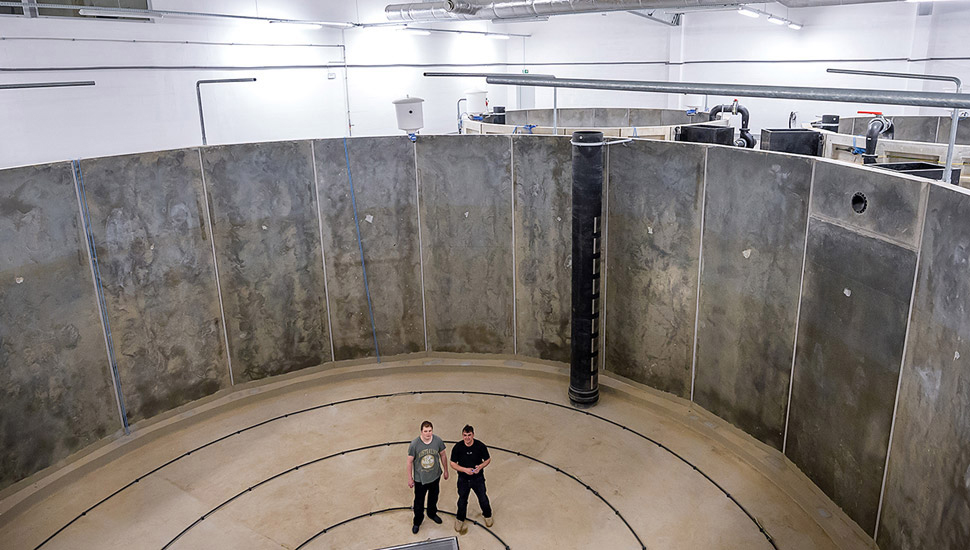
Innovation & Investment
Granja RAS de salmón en Polonia mezcla tecnología moderna con agua prehistórica
Jurassic Salmon, establecida en Polonia hace apenas dos años, utiliza aguas salinas geotérmicas de 150 millones de años de antigüedad de la época del "Bajo Jura." Armada con certificaciones, la compañía está navegando una etapa complicada del crecimiento.
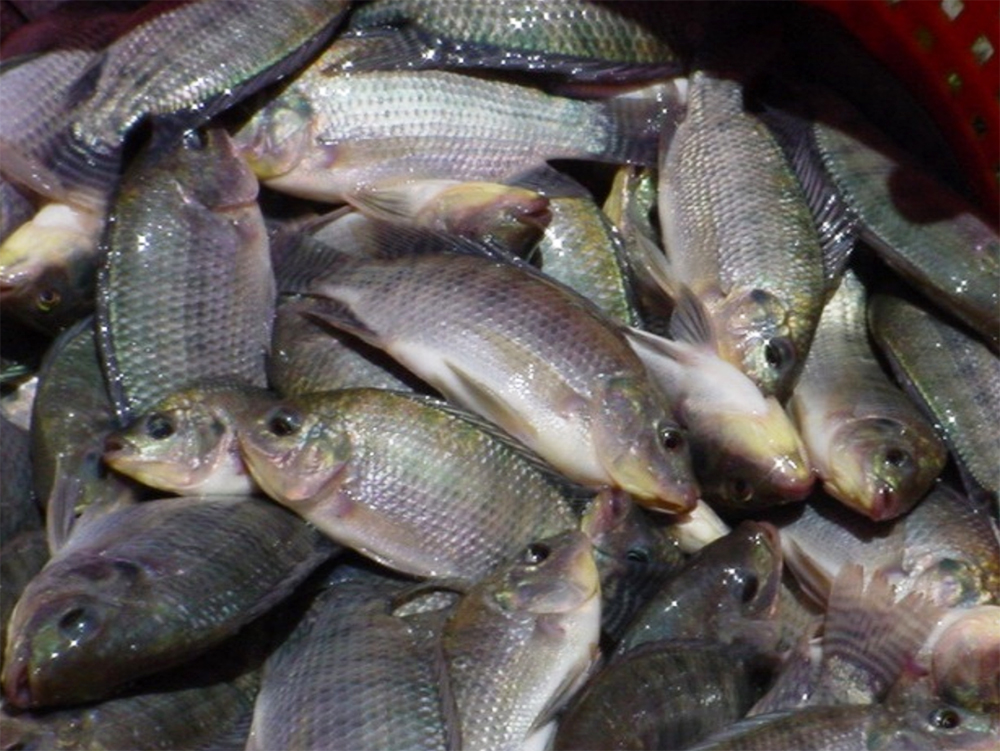
Intelligence
Consideraciones para el cultivo de tilapia en ambientes de agua salada
Las tilapias se cultivan en una variedad de sistemas de producción, pero principalmente en aguas dulce y de baja salinidad. Pero las tilapias son un excelente candidato para la acuacultura en aguas salobres y marinas porque pueden tolerar una amplia gama de salinidad del agua.
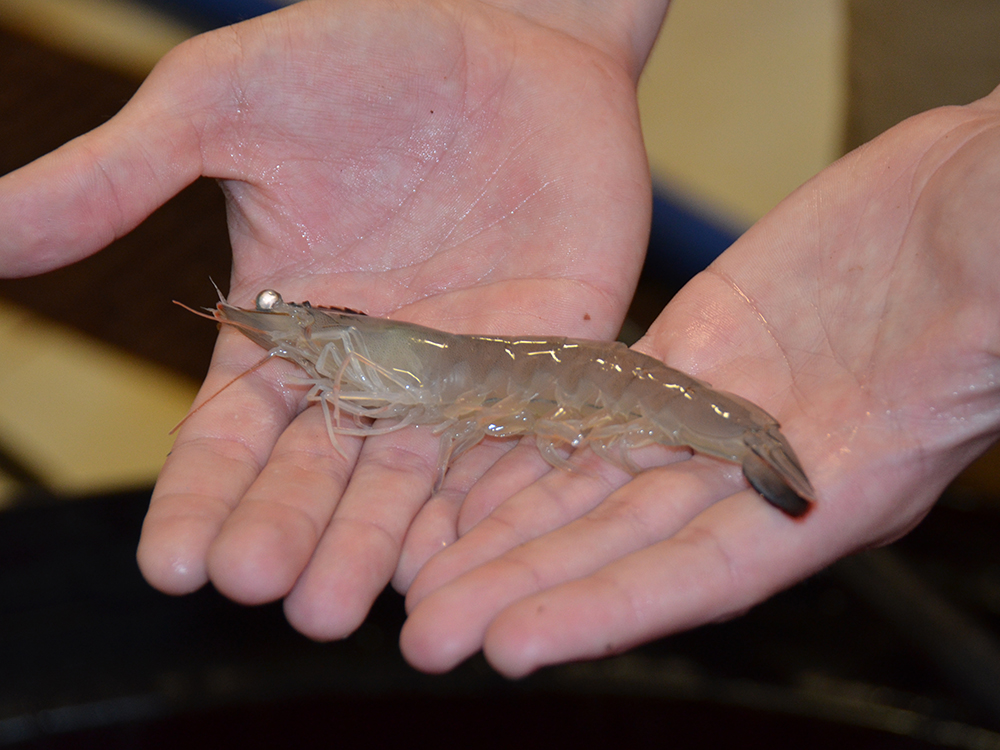
Aquafeeds
Sistemas de RAS de biofloc y agua clara: una comparación
En este estudio se compararon dos tipos de sistemas de cultivo de camarón bajo techo: RAS de aguas claras y sistemas de biofloc. El RAS de aguas claras tuvo la ventaja en la calidad del agua, y el camarón en el tratamiento biofloc tuvo una mayor conversión de alimento.

